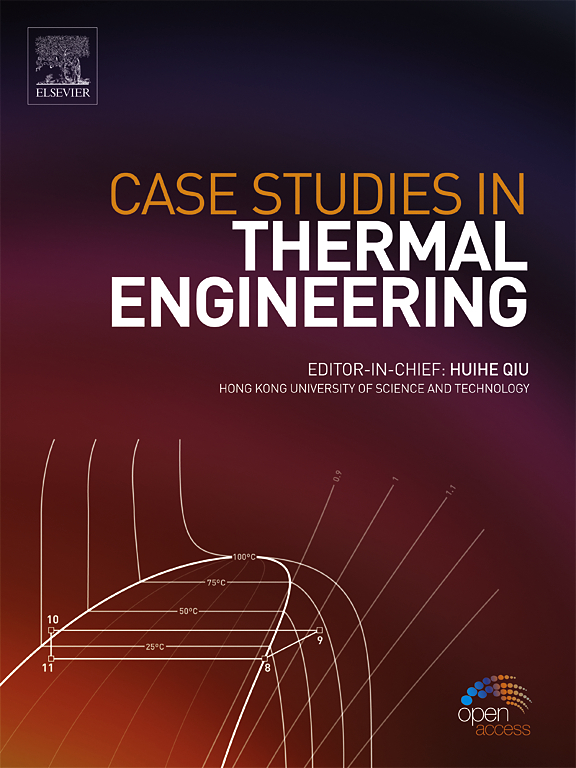Conversion of water hyacinth biomass to biofuel with TiO2 nanoparticle blending: Exergy and statistical analysis
IF 6.4
2区 工程技术
Q1 THERMODYNAMICS
引用次数: 0
Abstract
The lower calorific value of biodiesel results in lower efficiency compared to diesel mode. To address this issue, researchers have explored the use of nanoparticles to enhance the properties of biodiesel. In this study, nano-fuel with 150 ppm of TiO2 nanoparticles in Water Hyacinth Biodiesel (WHB) was examined. The fuel injection pressure (FIP) of the engine is advanced for the nanofuel, and engine tests are conducted at various FIP (200 bar–280 bar) and engine loadings (20 %–100 % in five steps, 20 % increment after each step). The results showed FIP up to 260 bar resulting in increased exergetic and brake thermal efficiency (BTE) and decreased emissions of CO and HC for all engine loadings. The maximum reduction of 56.92 % and 36.4 % were observed for CO and HC at 260 bar FIP. Optimized values from the statistical analysis suggest that the input variables with 42.17 % of engine load and 276.29 bar of FIP result in optimum values of response variable such as BTE of 48.95 % for WHB-TNP blend. Therefore, it was concluded that the nanofuel of TiO2 nanoparticles and WHB at a FIP of 260 bar works better than diesel mode for all engine loads.
求助全文
约1分钟内获得全文
求助全文
来源期刊

Case Studies in Thermal Engineering
Chemical Engineering-Fluid Flow and Transfer Processes
CiteScore
8.60
自引率
11.80%
发文量
812
审稿时长
76 days
期刊介绍:
Case Studies in Thermal Engineering provides a forum for the rapid publication of short, structured Case Studies in Thermal Engineering and related Short Communications. It provides an essential compendium of case studies for researchers and practitioners in the field of thermal engineering and others who are interested in aspects of thermal engineering cases that could affect other engineering processes. The journal not only publishes new and novel case studies, but also provides a forum for the publication of high quality descriptions of classic thermal engineering problems. The scope of the journal includes case studies of thermal engineering problems in components, devices and systems using existing experimental and numerical techniques in the areas of mechanical, aerospace, chemical, medical, thermal management for electronics, heat exchangers, regeneration, solar thermal energy, thermal storage, building energy conservation, and power generation. Case studies of thermal problems in other areas will also be considered.
 求助内容:
求助内容: 应助结果提醒方式:
应助结果提醒方式:


